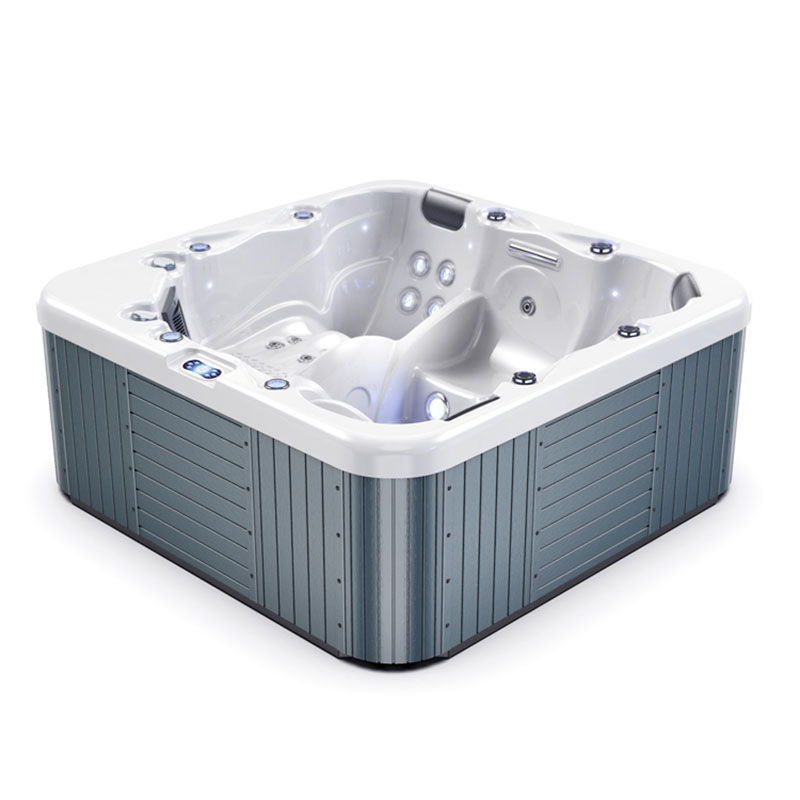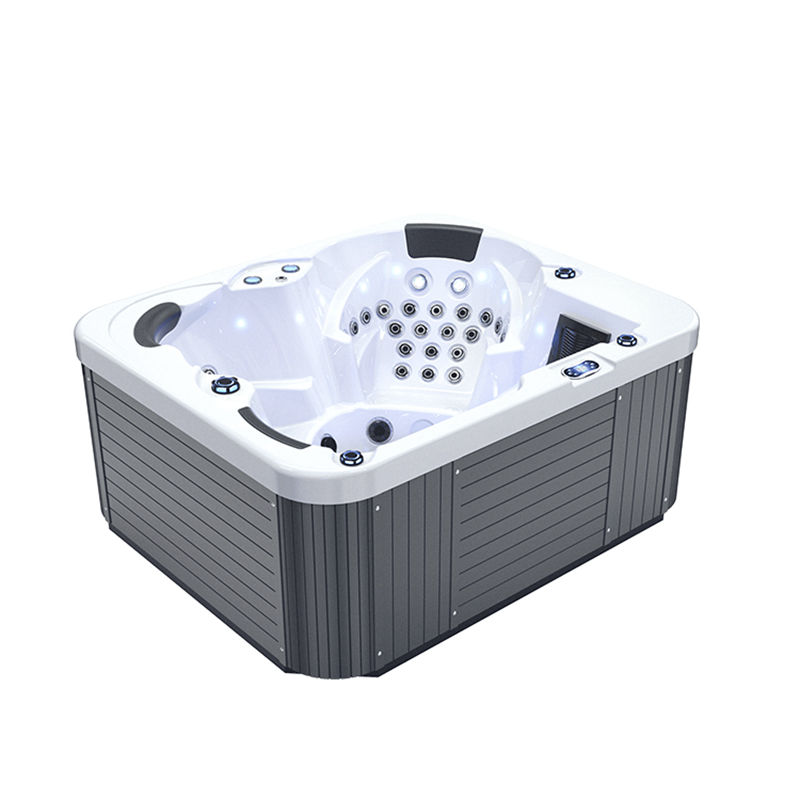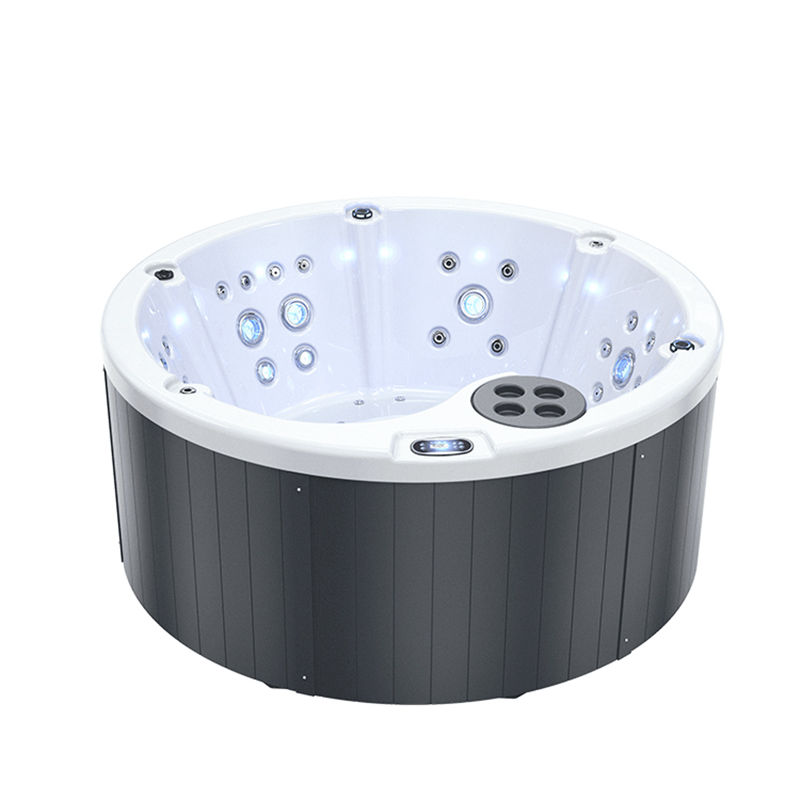Before installing an outdoor multi-person hot tub, determining the deck's load-bearing capacity is an extremely important step. The deck's stability and support capacity determine whether it can safely bear the weight of the spa hot tub and avoid structural damage or accidents. A spa hot tub is not only filled with water, but also has the weight of multiple people to consider, which means that the deck must be strong enough to carry the additional load.
This article will take a deep dive into how to assess whether your deck is suitable for the weight of a spa hot tub, helping you plan scientifically and reasonably to ensure a safe installation and extend the life of the deck.
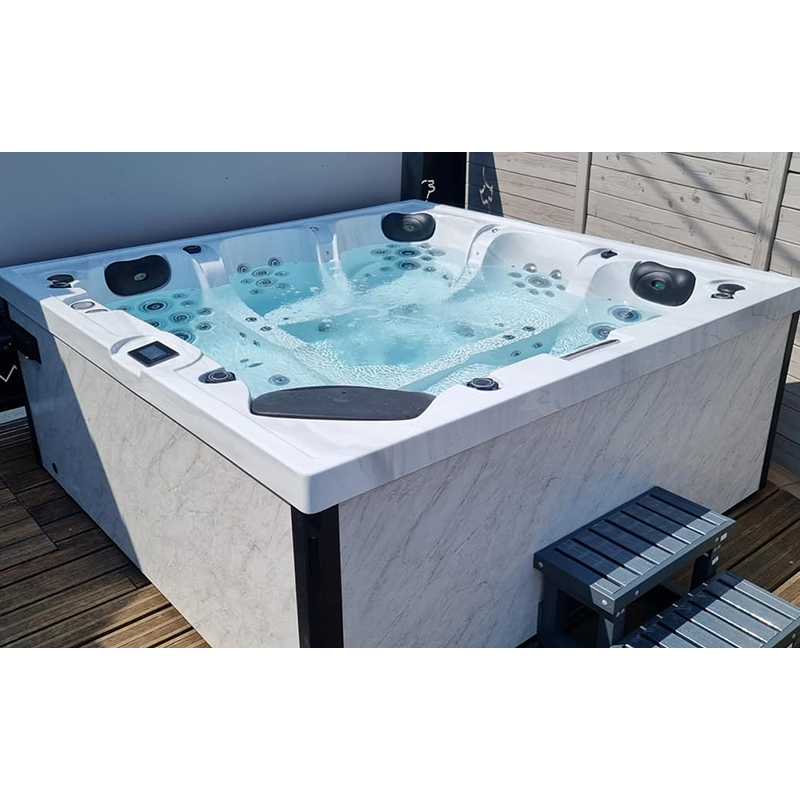
Weight of spa hot tubs: factors you need to know
When installing a spa hot tub, the first thing to consider is its total weight. The weight of a spa hot tub includes not only the equipment itself, but also the weight of the water and the weight of multiple people. Therefore, the deck's load-bearing capacity must be able to withstand the weight of all three.
Weight of spa hot tubs
The weight of spa hot tubs varies from model to model and material to material. Typically, an empty spa hot tub may weigh between 200 kg and 500 kg. Larger, more luxurious spa hot tubs are likely to weigh more. Therefore, it is vital to understand the weight of a spa hot tub when choosing one.
Water weight
The weight of water is another key factor when assessing the load-bearing capacity of a deck. Water has a fixed density, and weighs approximately 1,000 kg per cubic meter of water. A spa hot tub that holds 1,000 liters (1 cubic meter) of water will weigh 1,000 kg of water alone. If your spa hot tub is larger, such as 2,000 liters, the weight of the water will be 2,000 kg.
Weight of people
A typical spa hot tub can accommodate 4 to 8 people. The average weight of each person is 70 kg to 90 kg. When the spa hot tub is filled with 8 people, the additional weight may be 600 to 700 kg. Although this is only a rough estimate, this additional load should not be ignored.
Putting the above three points together, a spa hot tub that weighs 400 kg empty and holds 2,000 litres of water will weigh about 3,100 kg when filled with water and eight people. This weight places a great demand on the deck's load-bearing capacity.
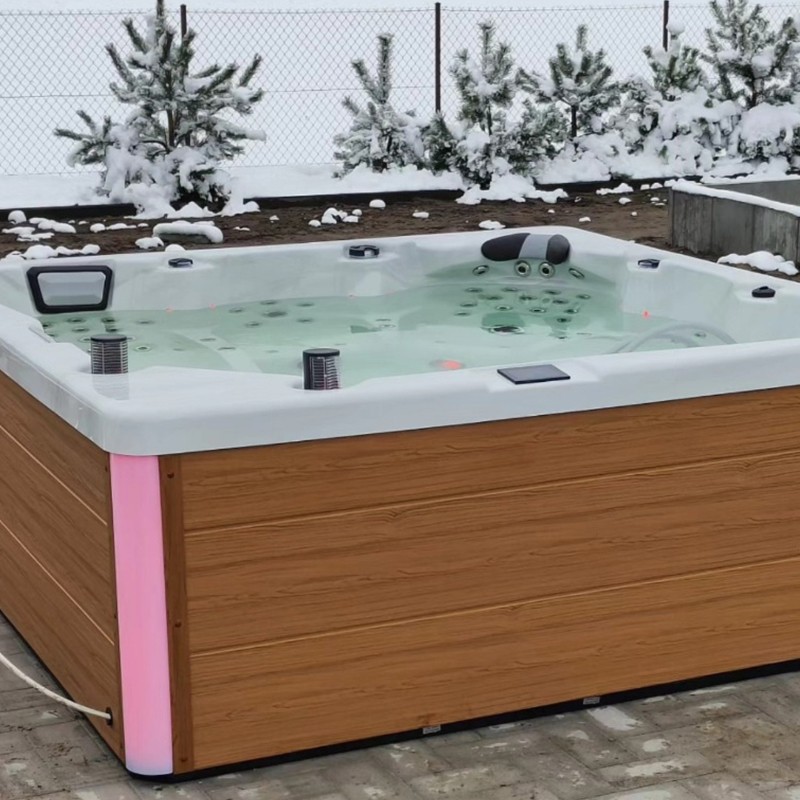
Load-bearing capacity of decks: how to evaluate?
Before determining whether a deck can support a spa hot tub, it is important to understand the deck's load-bearing capacity. Load-bearing capacity is usually determined by the deck's material, structural design, spacing of beams and struts, and fixing methods.
Influence of materials
The material a deck is built from directly affects its load-bearing capacity. Generally speaking, wooden decks are a common choice, usually made of pine, fir or composite materials. Different wood types have different load-bearing capacities. For example, pressure-treated pine decks are stronger and can withstand more weight. On the other hand, if ordinary untreated wood is used, the load-bearing capacity may be insufficient.
Composite and aluminum decks, while more weather-resistant and low-maintenance, generally have lower load-bearing capacities. Therefore, it is important to read the material specifications carefully to determine whether it is suitable for carrying the additional weight.
Structural design
The design of a deck determines its load distribution. A properly designed deck can distribute the weight load through appropriate pillars, beams and connectors. In common deck designs, the spacing between beams and pillars is usually 40 cm to 60 cm, but in order to support a spa hot tub, it is recommended to reduce the spacing of beams to about 30 cm to provide more support.
In addition, whether the overall design of the deck includes additional support structures is also a key factor. A single deck may not be enough to support a spa hot tub, especially when it may sag or bend when carrying excessive weight. Therefore, if you plan to install a spa hot tub on your deck, you may need to redesign or reinforce the structure to add additional pillars and support beams.
Load standards
When evaluating whether a deck can support a spa hot tub, you can use reference data provided by building standards or professional contractors. According to building codes, a general wooden deck should be able to withstand a weight of 300 to 500 kg per square meter. However, considering that the weight of a spa hot tub is concentrated in a smaller area, the load-bearing standard needs to be higher.
The spa hot tub occupies a limited area and has a large concentration of weight. If the deck has a load-bearing capacity of 500 kg per square meter, and the spa hot tub occupies 2 square meters and weighs more than 1,000 kg, the deck may not be able to bear it. Therefore, the deck's load-bearing capacity must be additionally evaluated for the specific size and weight of the spa hot tub.
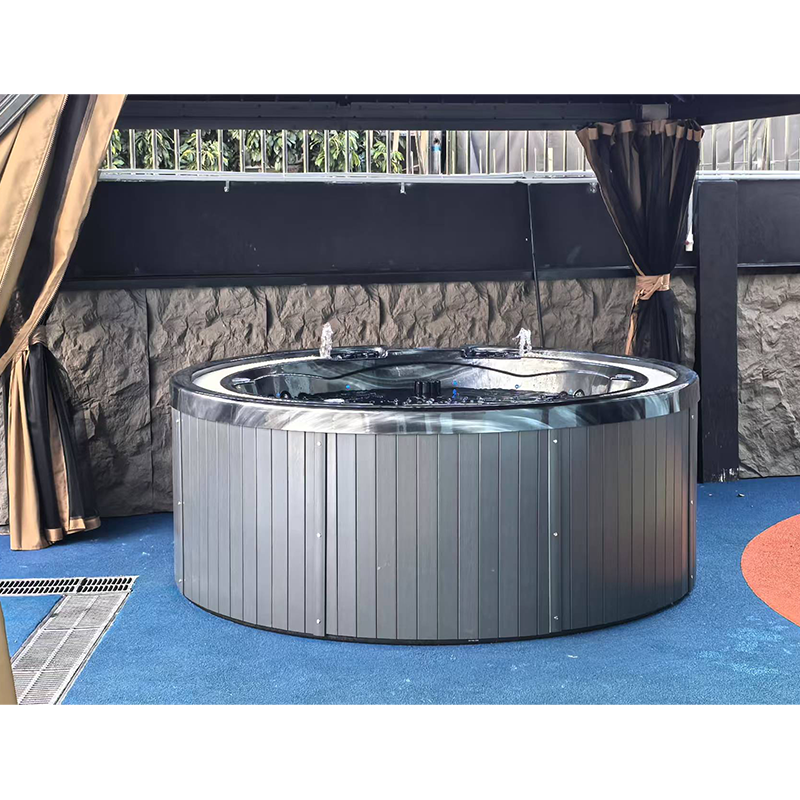
How to increase the deck's load-bearing capacity?
If you determine that the current deck's load-bearing capacity is insufficient to support the spa hot tub, there is no need to rush to replace the entire deck. Here are some common ways to increase the deck's load-bearing capacity and ensure safe use.
Adding pillars and beams
If the deck is already designed to withstand heavy loads, you can increase its load-bearing capacity by adding pillars and beams. Adding more pillars can help distribute the weight of the spa hot tub and avoid concentrating all the weight on limited support points.
Reducing the spacing between pillars to about 30 cm or adding additional support structures under the spa hot tub are effective ways to strengthen it. These pillars should be fixed to a solid foundation, such as a concrete foundation, to ensure that they can withstand the heavy weight.
Strengthen the deck foundation
In addition to adding pillars and beams, you can also consider reinforcing the deck's foundation. For example, you can lay a concrete foundation on the ground and ensure that the pillars and beams are firmly fixed and will not sink under the weight. In addition, if the deck is already showing signs of sagging or bending, it may be necessary to replace damaged parts or re-reinforce the foundation.
Consult a professional architect or engineer
For complex or large decks, it is recommended to consult a professional architect or engineer for a detailed assessment and design. A professional can provide specific advice on the deck's load-bearing capacity and design the appropriate support structure based on the size, weight and layout of the spa hot tub to ensure long-term safety.
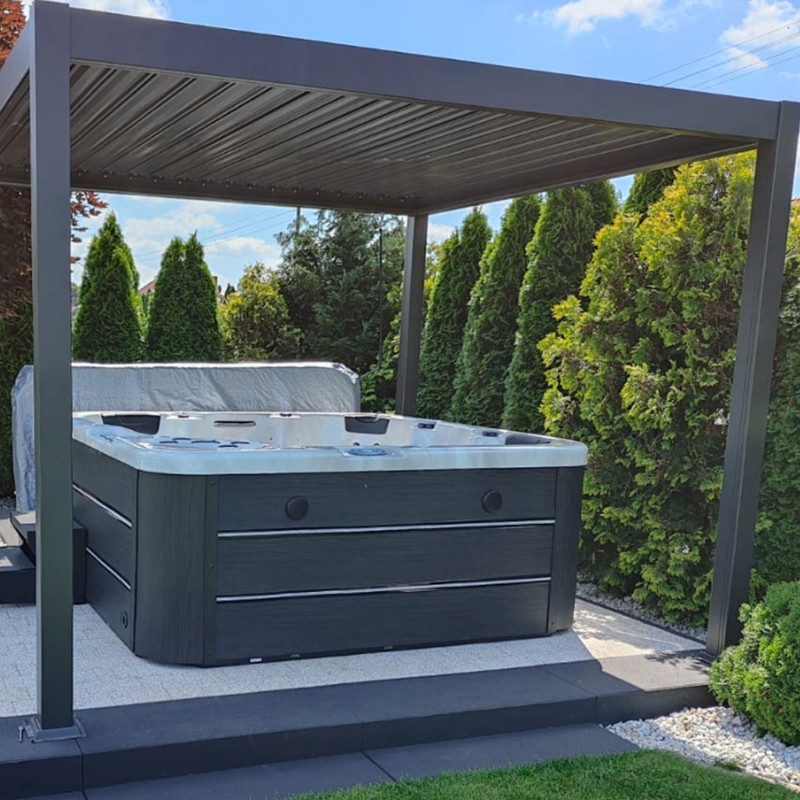
What are some common mistakes when assessing and enhancing the load-bearing capacity of a deck?
Here are some common mistakes to avoid when assessing and enhancing the load-bearing capacity of a deck:
Ignoring the weight of water and people
Many people only consider the weight of the spa hot tub itself and ignore the weight of water and multiple people. This misassessment can lead to overloading the deck and cause the structure to fail. Therefore, the weight of water and people should always be calculated and included in the total weight assessment.
Using unsuitable materials
It is very important to choose the right deck material. If inferior or untreated wood is used, the deck may rot, warp or crack in a short time, resulting in structural instability. Therefore, always choose durable, pressure-treated materials.
Are you looking for a high-quality spa hot tub supplier? Guangzhou Huantong Industrial is your perfect partner for high-quality outdoor wellness solutions. We have been manufacturing top-quality products, including acrylic spa hot tubs, swim spas, and whirlpools, since 1989. Contact us today for low prices, volume discounts, and special promotions.


